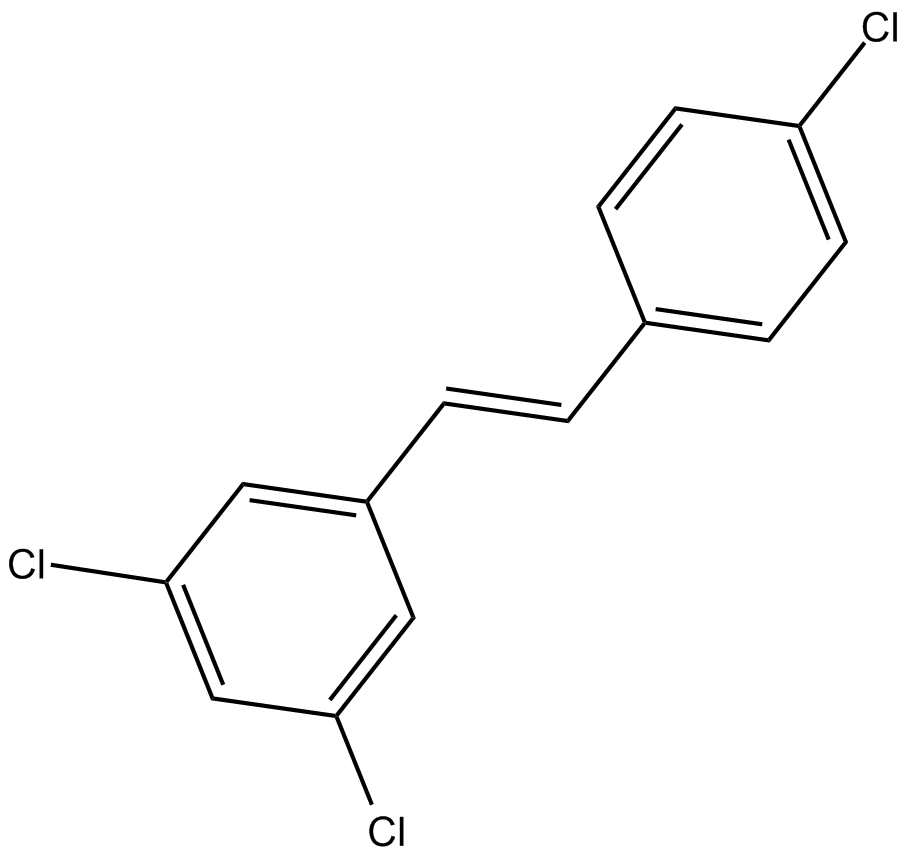PDM 2 |
| Catalog No.GC11817 |
potent and selective aryl hydrocarbon receptor (AhR) antagonist
Products are for research use only. Not for human use. We do not sell to patients.

Cas No.: 688348-25-6
Sample solution is provided at 25 µL, 10mM.
Ki = 1.2 nM
PDM 2 is a potent and selective aryl hydrocarbon receptor (AhR) antagonist.
The aryl hydrocarbon receptor (AhR) is a ligand-dependent intracellular transcription factor whose ligands include some of the most infamous xenobiotics, such as dioxin, benzo[a]pyrene, and various polyaromatics from soot and coal tar.
In vitro: In a previous screening study, it was found that the replacement of resveratrol hydroxyls by the same substituent produced compounds with the following order of affinity: OH (resveratrol) , OMe < F < CF3 < Cl (PDM 2). PDM 2 exhibited a Ki of 1.25 for AhR and no affinity for ER, indicating that replacement of hydroxyl with chloride could abolish binding on ER and dramatically increase the affinity for AhR. Moreover, among its analogs PDM 2 was the most potent AhR antagonists in this series, being 10-fold more efficient than resveratrol. PDM 2, devoid of measurable affinity for ER, did not display any effect on ER-driven transcription. Therefore, PDM 2 was considered as a selective AhR modulator with regard to ER. In addition, its trimethoxylated derivatives and 3,5-methoxy derivatives were able to induce cytotoxicity at doses lower than 100 nM, which was consistent with previous data. 3,5-Methoxy derivatives, however, only showed cytotoxicity at concentrations higher than 10 μM [1].
In vivo: Up to now, there is no animal in vivo data reported.
Clinical trial: So far, no clinical study has been conducted.
Reference:
[1] de Medina, P. ,Casper, R.,Savouret, J.F., et al. Synthesis and biological properties of new stilbene derivatives of resveratrol as new selective aryl hydrocarbon modulators. Journal of Medicinal Chemistry 48, 287-291 (2005).
Average Rating: 5 (Based on Reviews and 4 reference(s) in Google Scholar.)
GLPBIO products are for RESEARCH USE ONLY. Please make sure your review or question is research based.
Required fields are marked with *




















